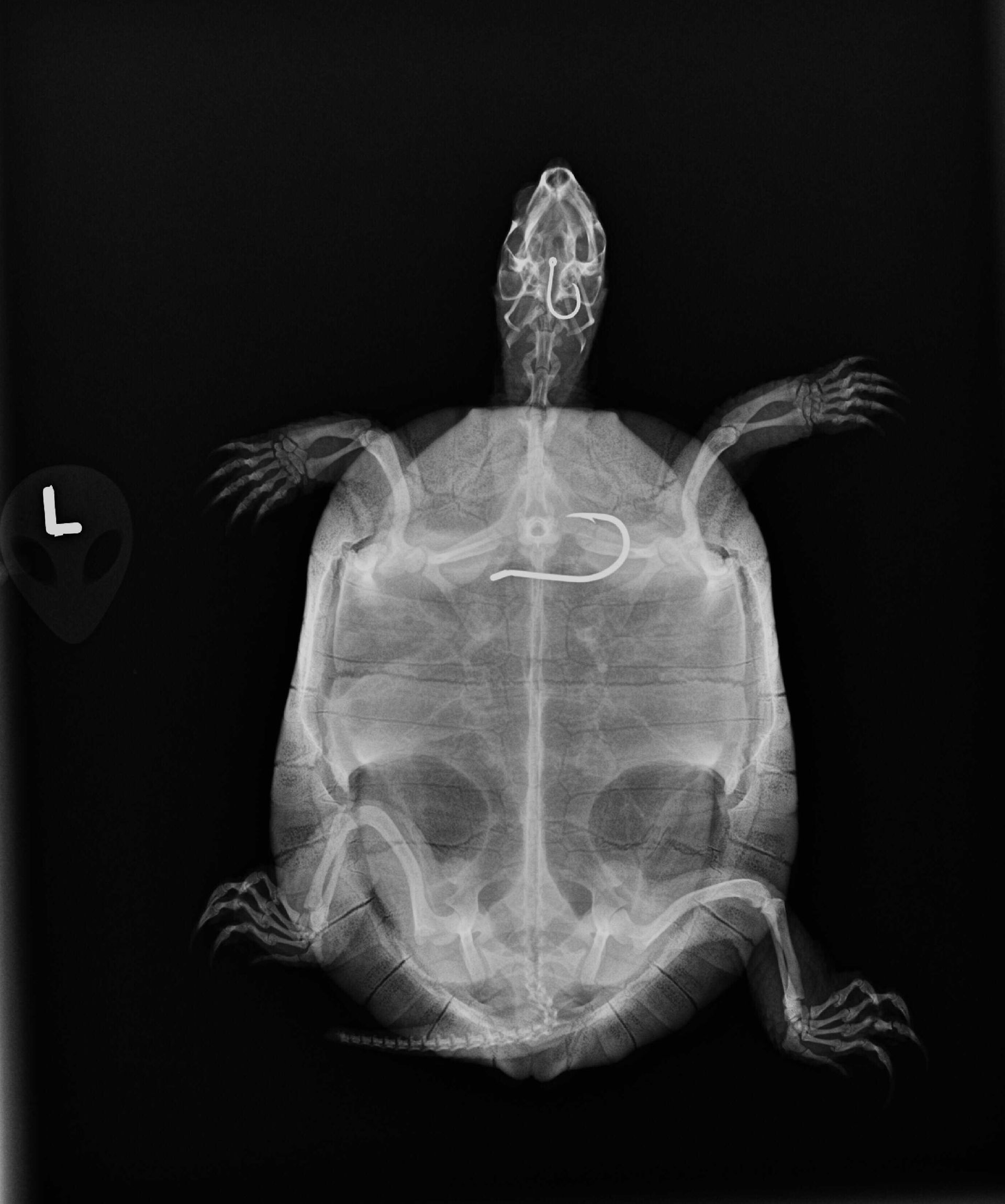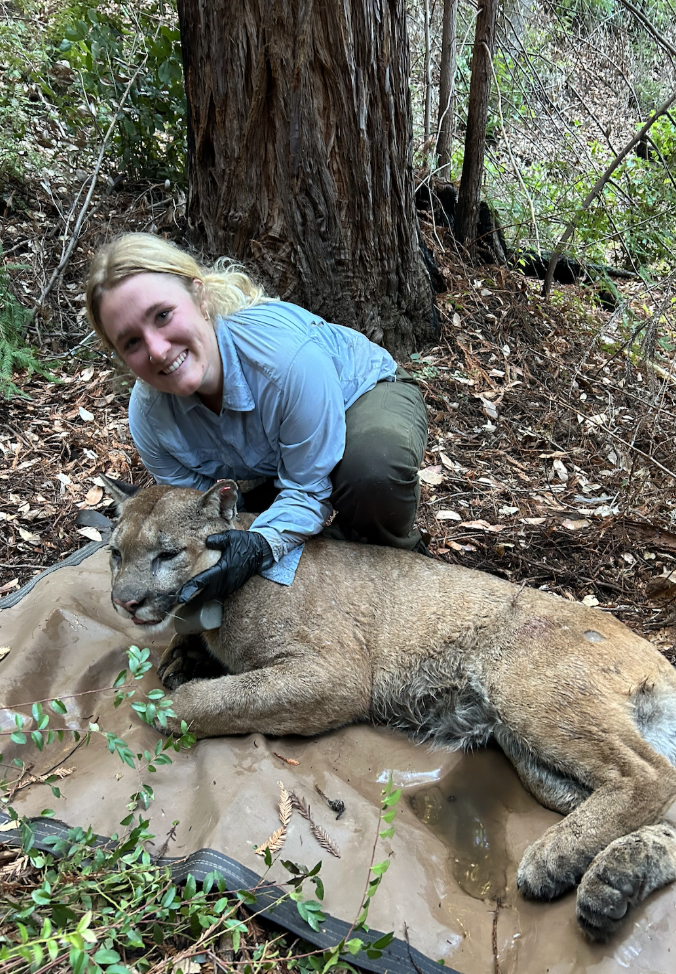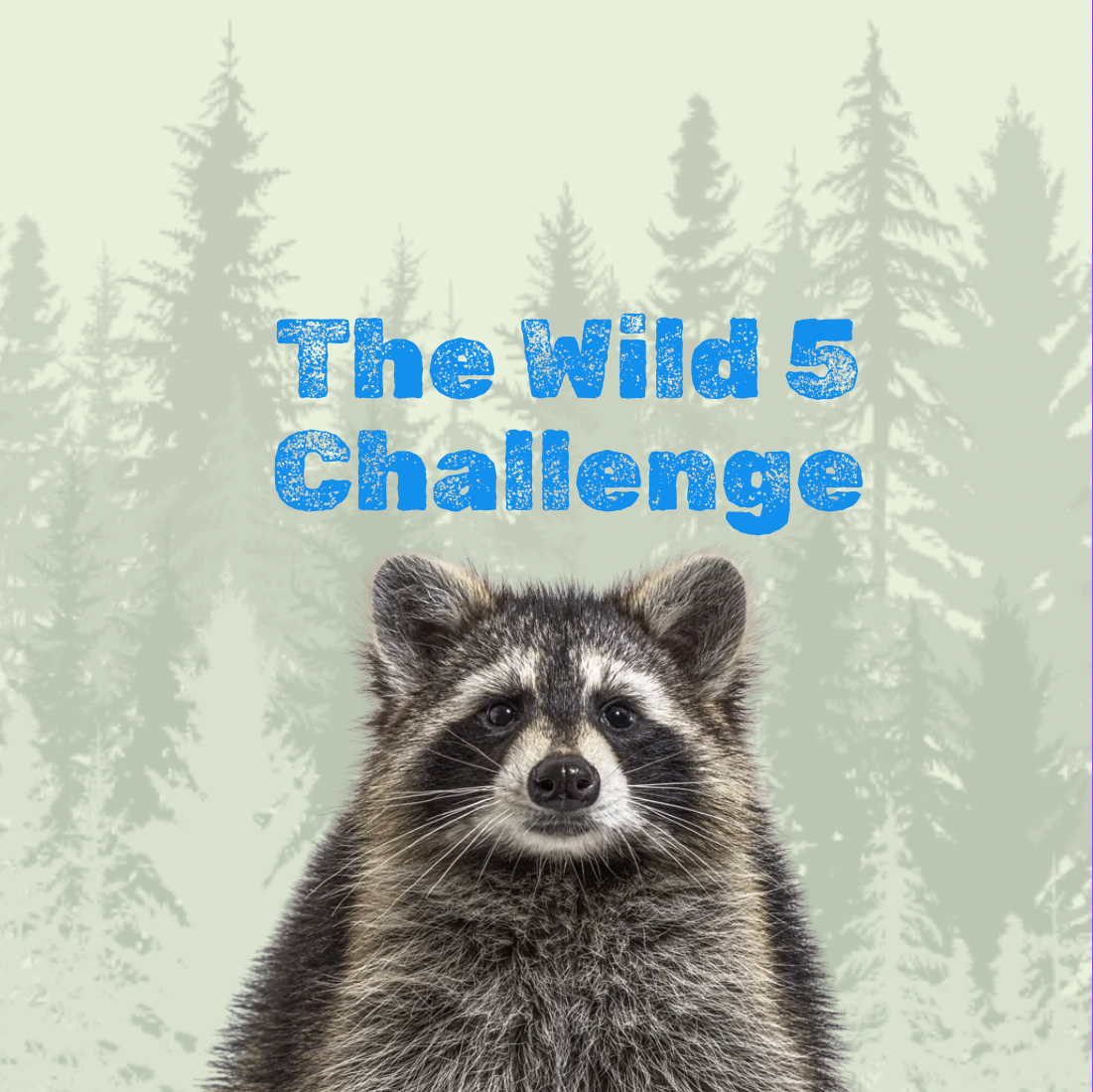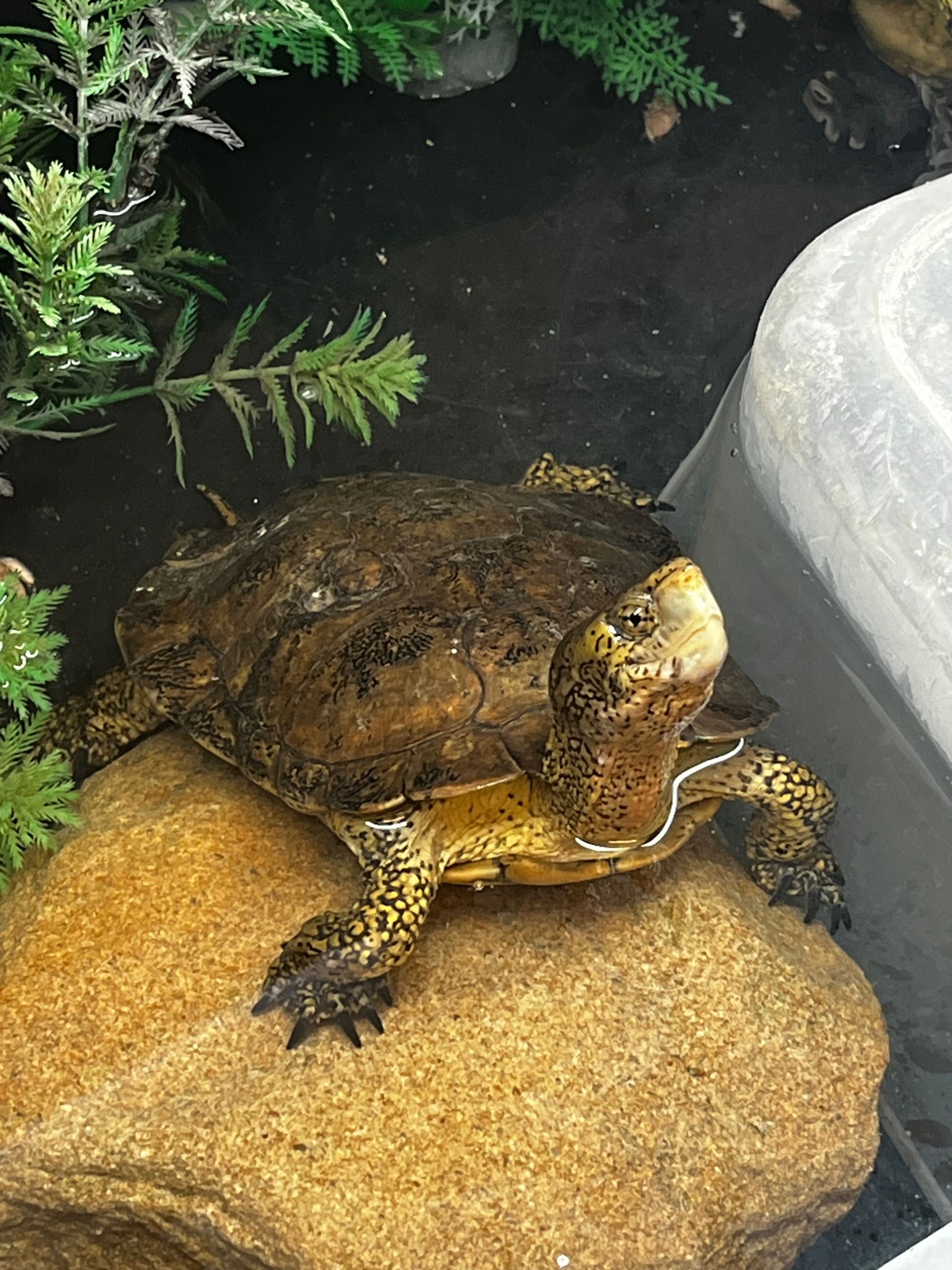Guest Author Kaili Falk shares her work in mountain lion conservation
and the lessons she has learned.
Despite their elusive nature and general avoidance of humans, the stories that mountain lions tell have a far greater impact on us than you may think. Understanding their behavior can give researchers insights into more complex social issues like the ongoing battle over development of relatively undisturbed areas.
My first capture: pictured here is 130M- a local male we needed to capture and recollar. He is safe and sound- peacefully sleeping as we take measurements and collect metrics to ensure his health. Under my hand is his GPS collar which will be used to collect movement data.
For the final two years of my undergraduate experience at UC Santa Cruz, I was involved in the Santa Cruz Puma Project– an organization that studies how human development and urbanization impacts habitat, genetic flow, and population health for pumas in the Santa Cruz Mountains. To obtain data for this research, we capture and collar pumas, taking measurements, conducting general health assessments, and fitting them with GPS collars. Since having the opportunity to participate in these (ethical) captures, I have been known as the“Mountain Lion Catcher” to my friends and family- a title that sounds exciting to some, completely and utterly undesirable to others, and absolutely terrifies my family.
To me, being the girl that researches mountain lions is much more than just a title or accolade. Since I’ve spent so much time studying their movement and behavioral patterns, I’ve gained such a unique insight not only into their ecology, but also a portal into wildlife for all species threatened by urbanization.
I feel an obligation to share what I know– their story– and how they can shape future conservation efforts.
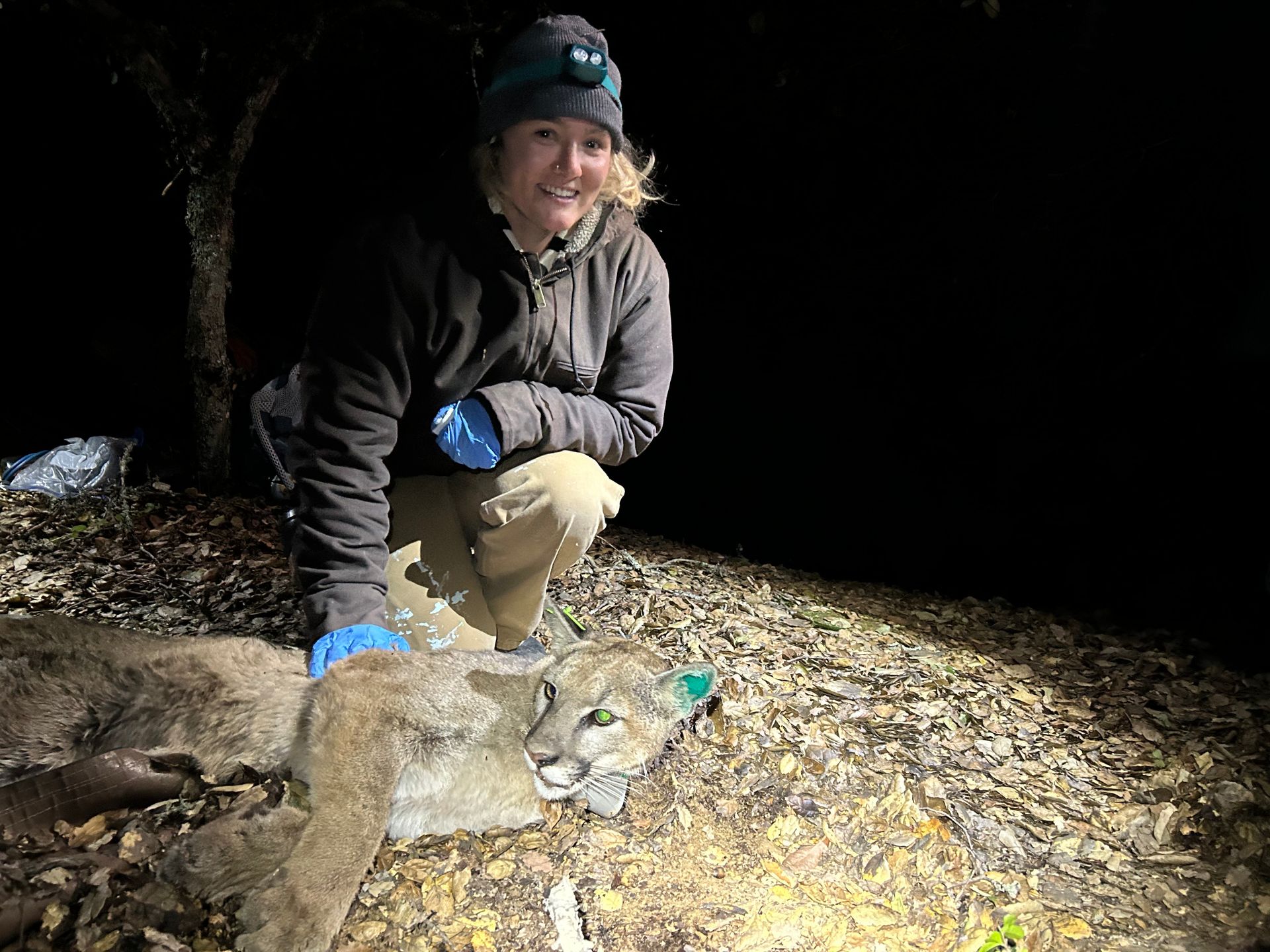
The collaring of an adult female in the hills above the Silicon Valley.
I completed a senior thesis, in collaboration with the Santa Cruz Puma Project, that collected the average measurements of pumas (their morphology), and their movement data, to determine how urbanization is impacting their habitats. Mountain lions are territorial carnivores and most develop home ranges. My research used mountain lion data from 2008 to 2025, a sample size 163 pumas. I found that the average home range for a female was 44 km² and the average home range for a male was 104 km²- a healthy amount of land for one mountain lion.
After determining the average home range size, I assessed how these ranges changed when compared against variables like distance to urban edge, and levels of housing density. I concluded that pumas in areas with lower housing densities had larger home ranges (This data is depicted in Figure 2). Additionally, pumas further from the urban edge also tended to have larger home ranges (Figure 3). Housing density and urban edge are both anthropogenic disturbances— human caused alterations to the landscape. These results highlight that pumas exposed to anthropogenic disturbances have smaller home range sizes, potentially affecting puma population densities in human dominated areas. This can also affect pumas’ ability to regulate prey populations as an apex predator. The biggest takeaway from my research is that urbanization and human activity restrict space use of pumas in areas closer to human development.

Figure 1: Regression chart highlighting how pumas in areas with lower housing density had larger home ranges.
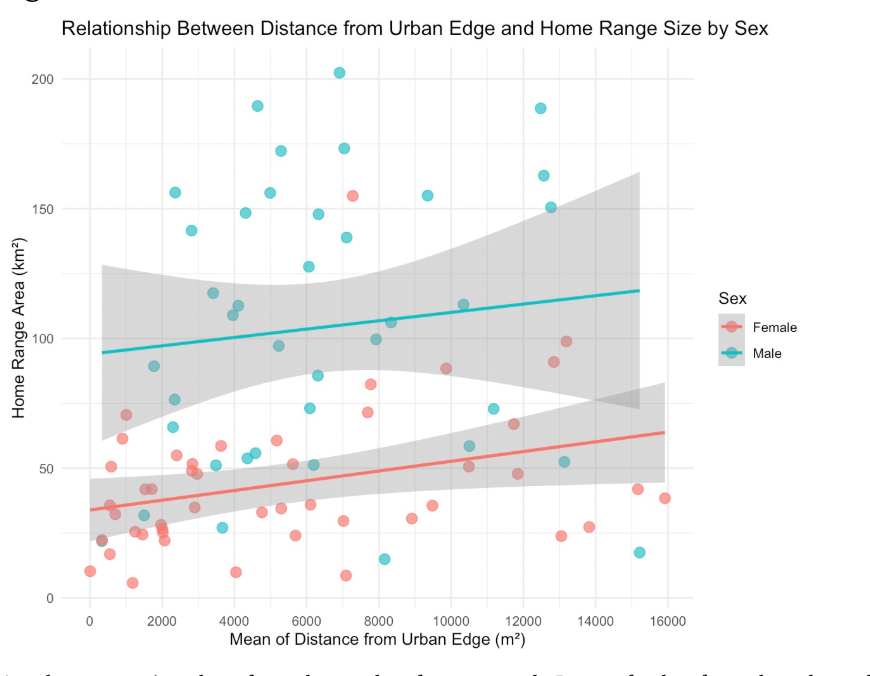
Figure 2: Regression chart from the results of my research. Pumas farther from the urban edge tended to have larger home range
Urbanization, the development of infrastructure like roads, highways, and houses, is inevitable in our society. Here in California and all across the United States, we are faced with an increasing need for housing. To tackle housing affordability, many are in favor of increased development in California. In 2023, Governor Gavin Newsom announced that by 2030, local governments must plan to have 2.5 million new homes built, 1 million of which must be affordable housing (1). This development is likely to contribute to the increase in Wildland-Urban Interfaces (WUIs), where human development meets wild habitat (2). Groups in support of Newsom’s development policy for abundant housing make up the YIMBY movement (Yes in My Backyard).
As crucial housing developments expand WUIs, knowing and being attuned to how wildlife interacts with urban and developing spaces is more important than ever before. This is especially important for decreasing human wildlife interactions, increasing sustainable co-existence, decreasing habitat fragmentation, and growing healthier relationships with “scary” wildlife. One way that researchers translate movement data into real world change is through the construction of highway corridors. Often in the form of a tunnel or underpass, these pieces of infrastructure prevent wildlife mortality from car collisions but most importantly encourage connectivity in areas impacted by habitat fragmentation (3,4). As I mentioned earlier, I determined that the average home range size for a male mountain lion was 104 km²- roughly the same area as Paris, France. Since mountain lions require such a large range for habitat, the importance of preserving undisturbed open spaces becomes increasingly critical as urbanization continues (5). “Landscape ecology” is an emerging concept in conservation that refers to understanding how varying habitats affect biodiversity and ecological processes. Incorporating concepts of landscape ecology into future development can encourage sustainable co-existence with large carnivores like mountain lions. Ensuring mountain lions have sufficient habitat and connectivity would likely decrease human-wildlife conflict.
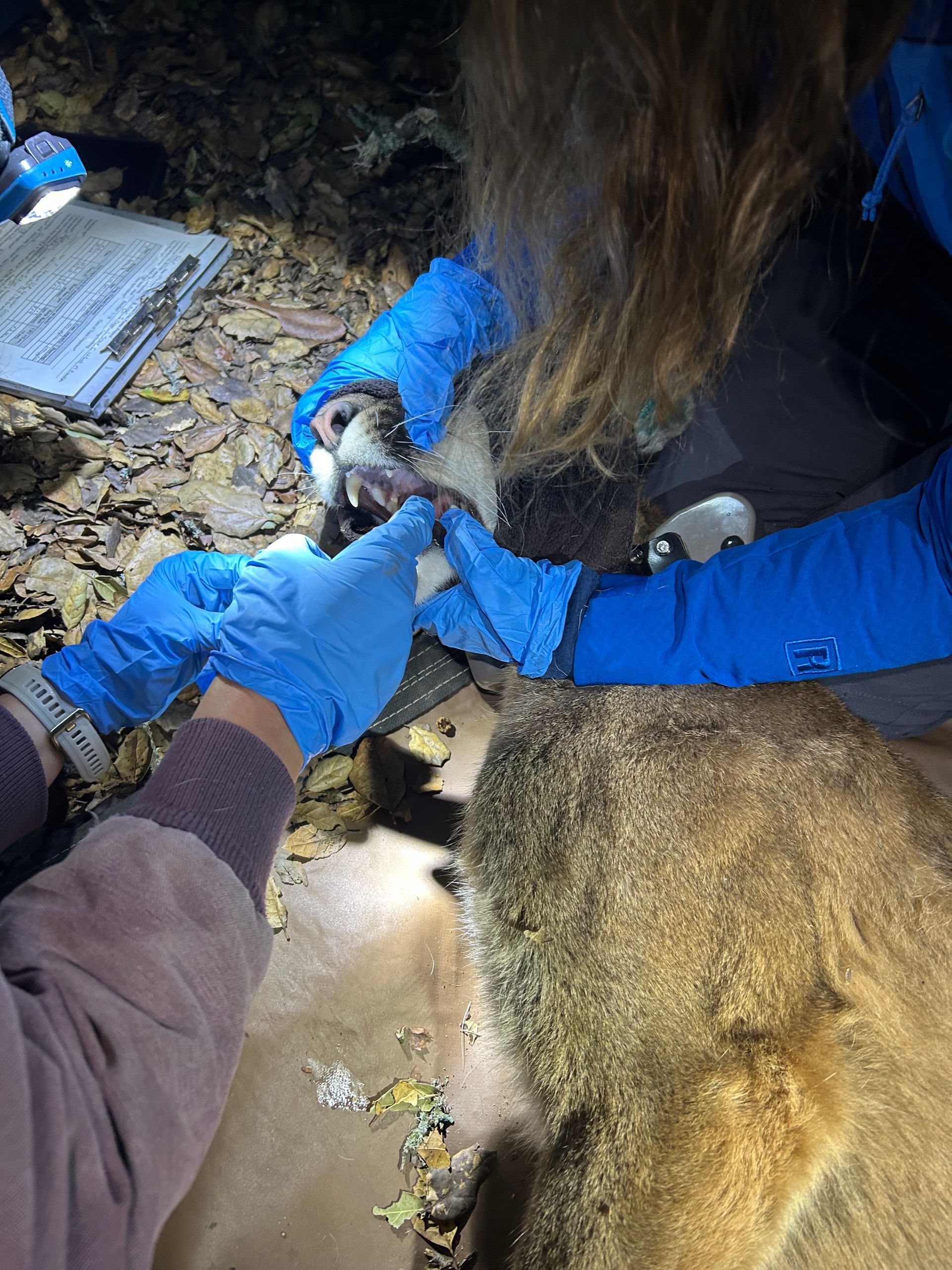
Taking morphometric measurements of this female’s canine teeth.
The issue of development- affordable or not– is no stranger to us in Santa Barbara. An issue near and dear to my heart is the battle against development along the Gaviota coast where the county has approved construction for a 6,500 sq ft estate at Naples. As a young girl- my fascination and passion for the natural environment was constantly nourished by this coast, hiking through the creeks of El Capitan and exploring the diverse ecosystems of West Goleta (located on the unceded lands of the Chumash people).
You might be wondering how mountain lions fit into this complex issue. While having valuable cultural heritage as well as personal sentimental value I’ve also been reflecting on the value of this land for the conservation of large mammals like mountain lions. There is no doubt that we need affordable housing, but how can we manage this in a way that is also beneficial for conservation efforts, especially for animals that need large areas for their survival? My research suggests that as housing density increases in mountain lion habitats, their home range will decrease. My proposed solution to this problem is to protect established open spaces, encourage sustainable development, and educate the public on mountain lion awareness. Protected spaces promote connectivity, allowing for migration between different mountain populations. Other solutions include vertical expansion, and highway wildlife corridors, like the one being constructed in Gaviota under the 101. These corridors prove to be helpful to mountain lions and other wildlife cross highways and expand their territory (6).
-----
Lastly, the odds of a mountain lion interaction are rare- I have gone into their dens and actively looked for them to no avail. They do NOT want to come into contact with humans. With that being said, I will leave you with a friendly reminder that should you come into contact with a mountain lion, make yourself as large as you can, make lots of noise, fight back, and throw sticks and rocks (do not bend over or make yourself small). Mountain lions are most active at dusk and dawn, as well as through the night. If you live in a more rural or mountainous neighborhood, bring your pets inside and secure livestock at night. Preventing conflict can also encourage mountain lion conservation since it prevents them from unnecessary culling.
As their habitats decrease because of our impacts, conservationists are called to take action to encourage the conservation of species like mountain lions, whose habitat is at risk of shrinking. Balancing scientific research and applicable conservation efforts with human development is our chance to mitigate the potential impacts of urbanization on our natural landscape. Mountain lions are not our enemy, rather, they are our neighbors.
Works Cited:
(1) https://www.gov.ca.gov/2023/05/19/governor-newsom-announces-567-million-for-new-affordable-housing/
(3)
https://www.sciencedirect.com/science/article/abs/pii/S0006320717308029
(4)
https://conbio.onlinelibrary.wiley.com/doi/full/10.1111/j.1523-1739.2010.01450.x
(5)
https://www.sciencedirect.com/science/article/abs/pii/S0169204602000051
(6) https://conbio.onlinelibrary.wiley.com/doi/full/10.1111/j.1523-1739.2010.01450.x

Kaili Falk is a recent alumni of UC Santa Cruz, with a degree in Environmental Studies. Her research combines GPS tracking and spatial analysis to understand how pumas use landscapes and interact with urban environments. She aims to support coexistence between mountain lions and human communities through science-based conservation.
